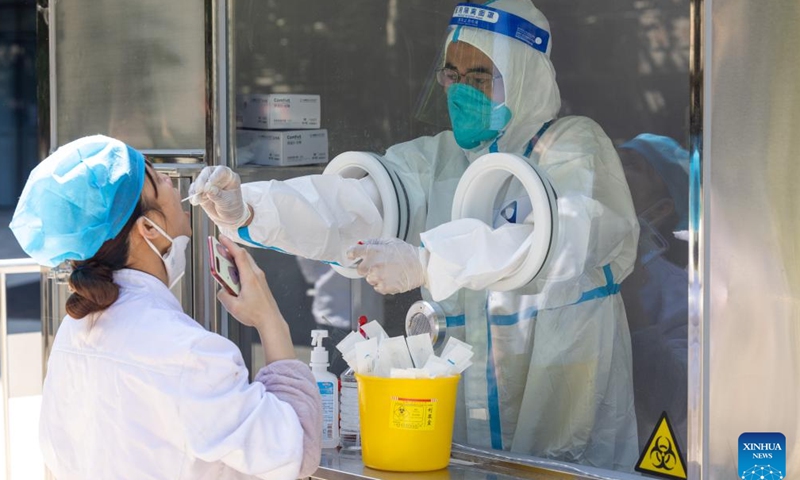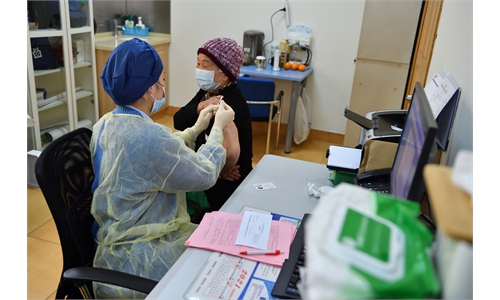Several districts in Shanghai launch a large-scale nucleic acid campaign to prevent ballooned COVID-19 infections

A staff member takes a swab sample from a woman for nucleic acid test in Huangpu District, east China's Shanghai, May 8, 2022. Shanghai has set up fixed and mobile acid testing sites in areas such as residential communities, office spaces, business parks and in the vicinities of subway and other public transport stations in accordance with the epidemic situation.Photo:Xinhua News Agency
Several districts in Shanghai will undergo nucleic acid testing, from July 12 to 14, requiring all residents in the area to complete two nucleic acid tests within three days to curb the risk of coronavirus transmission since the latest outbreak on July 3.
A new local asymptomatic infection in Shanghai has been reported and transferred to a designated medical institution for treatment, the local health authorities said at a press conference on Sunday afternoon, noting that a comprehensive epidemiological investigation has been carried out.
A total of five close contacts of the confirmed case in Shanghai have been identified as of on Sunday afternoon, placed under quarantine are undergoing nucleic acid testing, according to local authorities.
More than 200 local infections were reported in Shanghai from July 3 to 9, most of which were related to the outbreak in a Karaoke bar in Putuo District, health officials noted at the press conference on Sunday.
The Shanghai Center for Disease Control and Prevention (CDC) found that all the new infections related to the outbreak of the Karaoke bar were infected with the Omicron BA.2.2 subvariant after sequencing of the virus genes. The preliminary analysis showed that the infection was a cluster of the same transmission chain.
Public places with a large number of people gathering in the same space, such as karaoke bars and pubs, have caused the rapid spread of the virus in the short term, local authorities noted.
A large number of infections hanging over and the potential risk of hidden community transmission has directly led to the severe and complicated situation of the latest outbreak of COVID-19 in Shanghai, which is still in a critical period of epidemic prevention and control.
Meanwhile, a community infection reported in the Pudong New Area on July 8 was positive for the Omicron BA.5.2.1 subvariant, which was associated with an overseas visitor.
Residents are still encouraged to adhere to wearing masks, keeping social distance and maintain personal hygiene to prevent further spread of the virus, health authorities reminded, adding that the research results also suggest that vaccination remains effective in preventing severe illness and death after an infection with the BA.5subvariant.
Global Times

